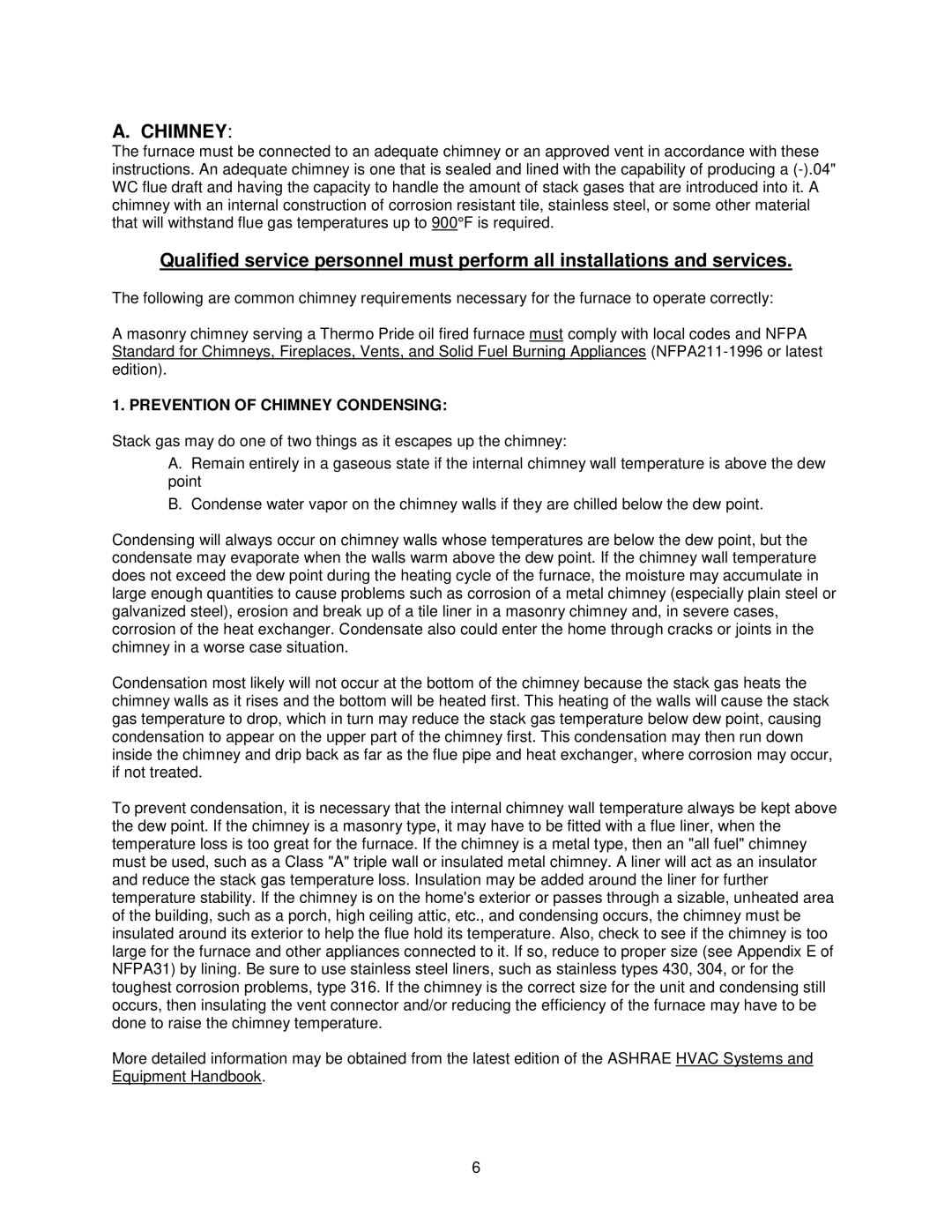OH6FA072D48R, OH8FA119D60B, OH6FA072DV4B, OH8FA119DV5B, OH6FX072DV4R specifications
Thermo Products has established a reputation for delivering high-quality heating solutions tailored for various applications. Among their standout offerings are the OH8FA119DV5R, OH8FA119D60R, OH6FA072D48B, OH6FA072D48N, and OH6FA072DV4N models. These units are engineered with precision and incorporate advanced technologies to deliver reliable performance in residential and commercial settings.One of the main features of these models is their energy efficiency. They utilize modern heat exchanger designs, which allow for maximum heat transfer while minimizing energy consumption. This not only helps in reducing utility bills but also supports sustainable practices by lowering the carbon footprint. Many systems are also equipped with variable-speed motors, providing precise airflow control, which enhances comfort while operating quietly.
In addition to their energy efficiency, these units incorporate smart technology that allows for seamless integration into home automation systems. This feature enables users to monitor and control their heating systems remotely through mobile apps, making it convenient to adjust settings for optimal comfort. The smart thermostats associated with these models often feature learning capabilities, which adapt to users' habits to optimize heating schedules further.
Durability is another standout characteristic of the OH8FA and OH6FA series. Built with robust materials, these heaters are designed to withstand the rigors of daily use. Many units come with extended warranties, reflecting the manufacturer's confidence in their longevity. Furthermore, corrosion-resistant components ensure that the units maintain their performance over time, even in challenging environments.
Safety is also a key consideration in these products. Equipped with multiple safety features, including overheat protection and flame sensors, users can rest assured their heating systems operate without risk. Additionally, these models often include advanced diagnostics, making troubleshooting easier and enhancing user experience.
In summary, Thermo Products' OH8FA119DV5R, OH8FA119D60R, OH6FA072D48B, OH6FA072D48N, and OH6FA072DV4N represent a blend of efficiency, technology, durability, and safety in heating solutions. Whether for a cozy home or a large commercial space, these models offer versatile options to meet diverse heating needs while prioritizing energy conservation and user convenience. As the demand for efficient heating continues to rise, Thermo Products remains a leader in providing innovative solutions that cater to modern heating requirements.
